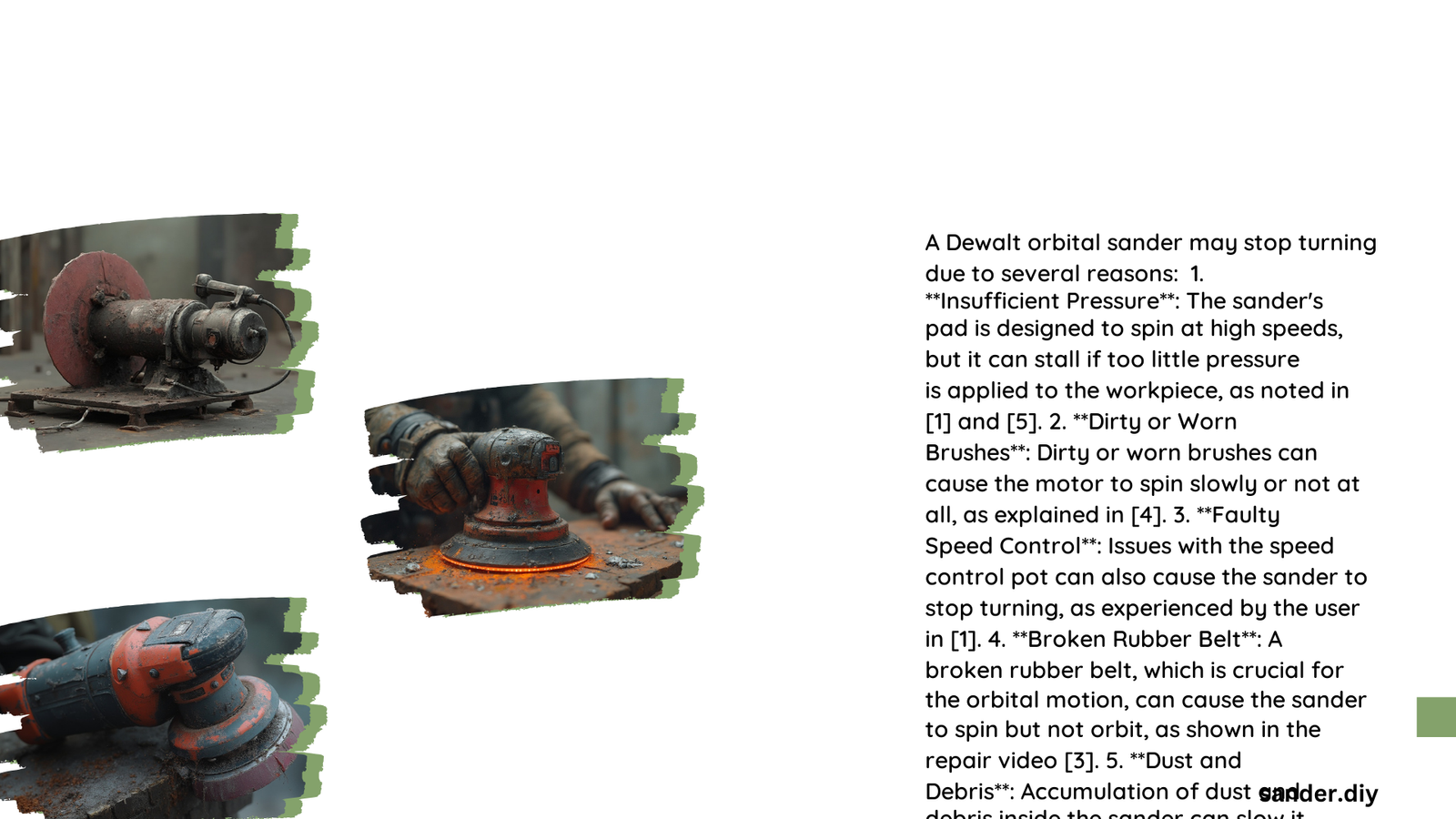A Dewalt orbital sander stopping mid-operation is a common issue faced by many users. This problem can stem from various factors, including motor failure, electrical issues, or component wear. Understanding the root causes and knowing how to troubleshoot can help restore your sander’s functionality. This article delves into the reasons behind a Dewalt orbital sander stopping and provides practical solutions to get it running again.
Why Does a Dewalt Orbital Sander Stop Turning?
A Dewalt orbital sander may stop turning due to several reasons, including motor failure, worn-out brushes, electrical connection issues, or damaged internal components. The problem could be as simple as a loose power cord or as complex as a seized motor. Identifying the specific cause is crucial for effective troubleshooting and repair.
What Are the Common Causes of Motor Failure?
Motor failure in a Dewalt orbital sander can occur due to various reasons:
- Brush Issues:
- Worn-out brushes
- Stuck brushes due to sawdust accumulation
-
Improper brush seating
-
Motor Seizure:
- Overheating
- Lack of lubrication
-
Debris accumulation
-
Clutch Mechanism Problems:
- Worn-out clutch
- Damaged clutch components
How to Identify Motor Failure Symptoms?
Look out for these signs to determine if your Dewalt orbital sander’s motor is failing:
- The sander turns by hand but not when powered
- Burning smell during operation
- Significant resistance when trying to turn the motor manually
- Loss of power and easy manual stopping of the pad
What Electrical Issues Can Cause the Sander to Stop?
Electrical problems are another common reason for a Dewalt orbital sander to stop turning. Here are some potential issues:
- Power Cord Damage:
- Frayed or cut cord
-
Loose connections at the plug or sander entry point
-
Switch Malfunction:
- Dirty or corroded switch contacts
-
Broken internal switch components
-
Power Source Problems:
- Faulty outlet
- Tripped circuit breaker
- Inadequate power supply
How to Troubleshoot Electrical Connections?
Follow these steps to check for electrical issues:
- Inspect the power cord for visible damage
- Test the cord continuity with a multimeter
- Clean the switch contacts or bridge them to test functionality
- Try the sander in a different outlet
What Internal Components Can Cause Operational Failure?
Several internal components can lead to a Dewalt orbital sander stopping:
- Rubber Belt:
-
A broken or missing rubber belt prevents orbital motion
-
Bearings:
-
Worn-out bearings can cause excessive friction and heat
-
Gears:
- Stripped or damaged gears can prevent power transmission
How to Check and Replace Internal Components?
To inspect and replace internal components:
- Disassemble the sander carefully, following the user manual
- Check the rubber belt for damage or absence
- Inspect bearings for smooth rotation
- Examine gears for wear or damage
- Replace any faulty components with genuine Dewalt parts
What Power Specifications Are Crucial for Proper Operation?
Understanding the power requirements of your Dewalt orbital sander is essential for troubleshooting:
| Specification | Corded Models | Cordless Models |
|---|---|---|
| Voltage | 120V AC | 20V DC (typical) |
| Amperage | Varies by model (check manual) | N/A |
| Wattage | Varies by model | Varies by model |
| RPM/OPM | Typically 12,000 OPM | Varies by model |
How Does Battery Performance Affect Cordless Models?
For cordless Dewalt orbital sanders:
- Battery voltage should match the sander’s requirements (usually 20V)
- Ensure the battery is fully charged before use
- Consider battery age and usage history
- Replace old or extensively used batteries that no longer hold a charge
What Are the Repair Costs and Failure Rates?
While specific failure rates are not available, common issues and their approximate repair costs include:
- Brush replacement: $10 – $30
- Rubber belt replacement: $5 – $15
- Motor replacement: $50 – $150 (varies by model)
Repair costs can vary significantly based on the model, part availability, and whether you choose professional repair or DIY.
Conclusion

A Dewalt orbital sander stopping mid-operation can be frustrating, but understanding the potential causes and troubleshooting steps can help resolve the issue quickly. By systematically checking electrical connections, motor components, and internal parts, you can often identify and fix the problem. Remember to always prioritize safety and consult professional help if you’re unsure about any repair steps.
